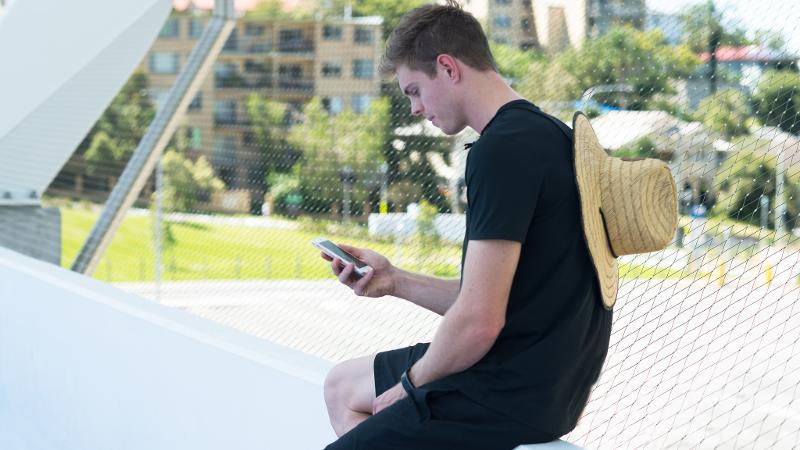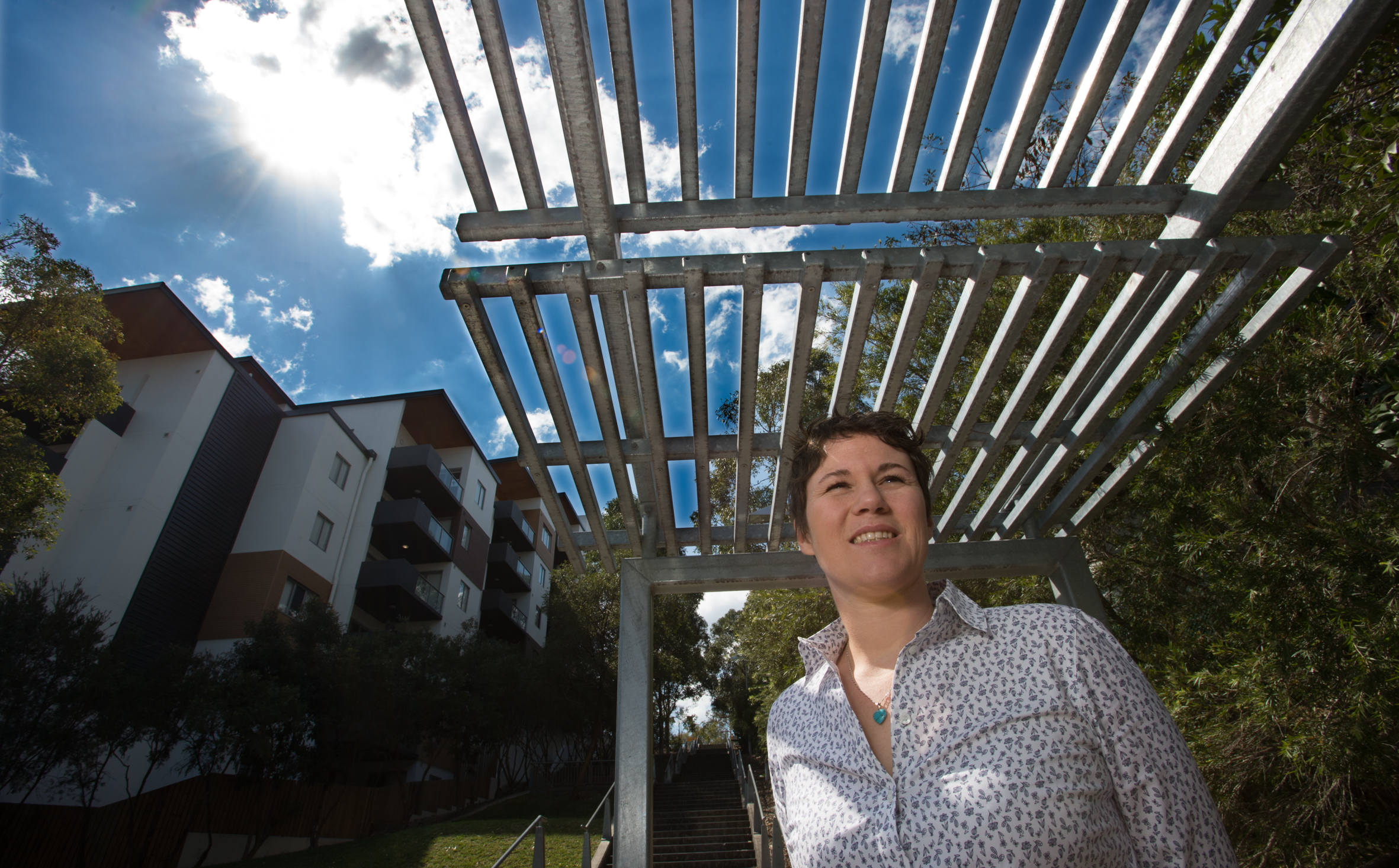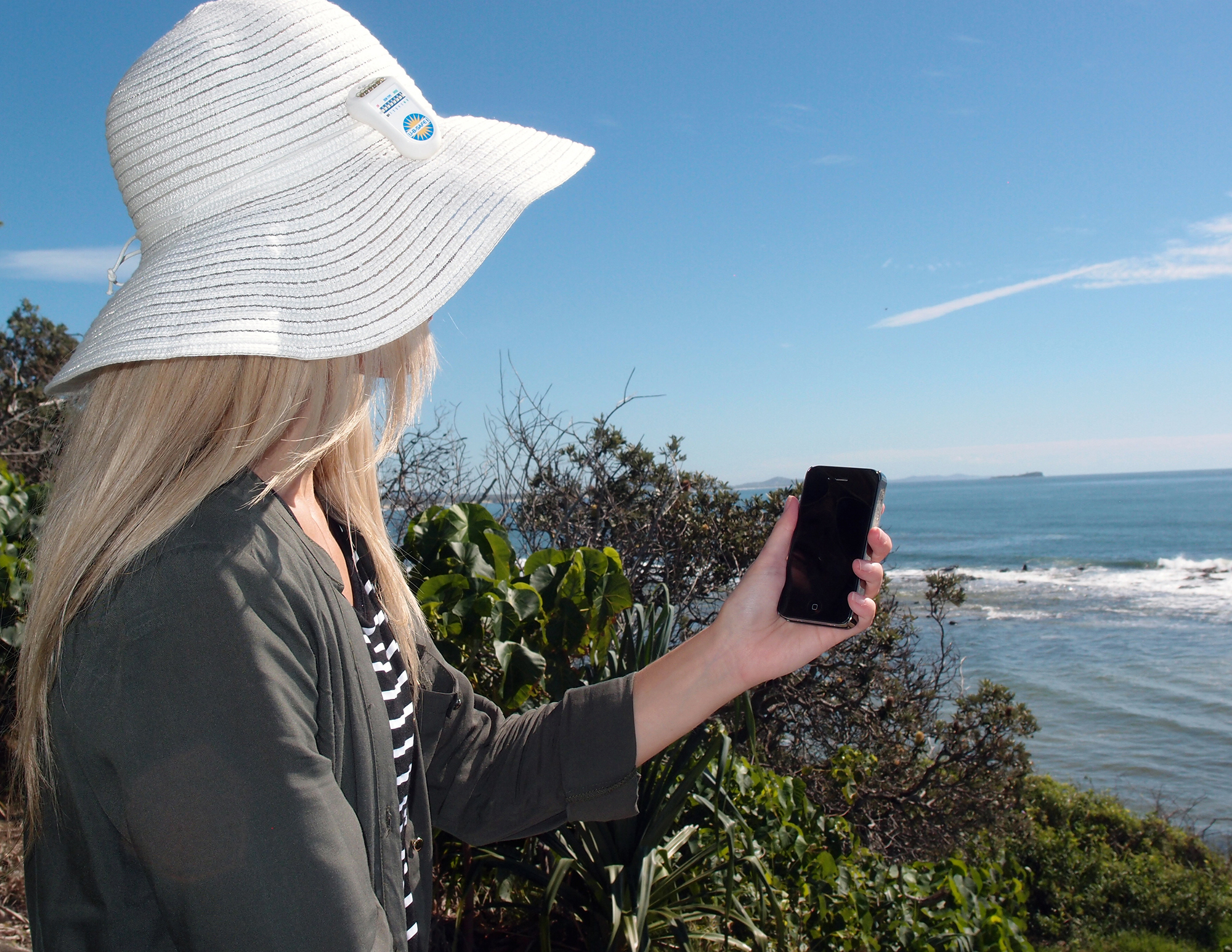
A smartphone app is an accessible tool that reliably measures the amount of exposure to the sun’s skin-damaging ultra-violet radiation, a QUT study has found.
Research fellow Dr Elke Hacker from QUT’s Institute of Health and Biomedical Innovation developed an app to test its effectiveness as a sun exposure measuring tool to promote sun-smart behaviour.
- The smartphone app was used to record sun exposure, sunburn and physical activity levels
- It was trialled by 74 people aged 18 to 30 and the data they entered was compared with data from other recording devices they wore, plus written diary records of their activity and time spent in the sun
- The study found the app data strongly correlated with data from the dosimeter wristwatches the participants wore that measured their ultra-violet radiation exposure
- More than half of the participants also said recording their personal UVR exposure daily made them more sun aware
- Findings are published in JMIR Research Protocols
Dr Hacker said the finding suggest a smartphone app is a good platform for determining sun exposure, and thanks to accessibility and low cost it could be an effective way to assess skin cancer prevention programs, particularly in younger age groups.
The importance of skin cancer prevention for young people is reflected in the latest Australian Institute of Health and Welfare report Cancer in adolescents and young adults in Australia. It shows that in 2010-2014 the skin cancer melanoma was the most commonly diagnosed cancer among young Australians aged 15 to 24, accounting for 15 per cent of all cancers diagnosed.
“Sunburn shows you have received a damaging dose of sunlight and ultra-violet radiation (UVR), and sunburn increases the risk of melanoma,” Dr Hacker said.
“The effectiveness of programs that look to raise skin cancer awareness and promote prevention are largely assessed by recording sun exposure behaviours.
“Our study shows a smartphone app to which people input their data is a reliable way to collect information about their sun and UVR exposure.”

Dr Hacker said physical activity data was collected in the study to evaluate whether focusing on sun avoidance may result in unhealthy reductions in physical activity.
She said study participants under-reported their low-intensity physical activity compared to what was captured by the accelerometer measuring devices they wore. This could be because the devices detected both incidental and purposeful physical activity, yet people didn’t consider things like being out and about walking as activity, or they didn’t remember to record it.
Dr Hacker is conducting a number of other studies testing innovative technologies designed to keep people sun safe and avoid sunburn, including an app which uses artificial intelligence (AI) to provide personalised advice relevant to a person’s skin type, the weather, environment, UV index, and when to reapply sunscreen.

The Capturing Ultraviolet Radiation Exposure and Physical Activity: Feasibility Study and Comparison Between Self-Reports, Mobile Apps, Dosimeters, and Accelerometers study was funded by a Cancer Council Queensland research grant. Co-authors with Dr Hacker are Caitlin Horsham (QUT), Dr Martin Allen (The MacDiarmid Institute, University of Canterbury, New Zealand), Dr Andrea Nathan (Australian Catholic University, Melbourne), Dr John Lowe (University of the Sunshine Coast) and QUT Adjunct Professor Monika Janda.
QUT Media contacts: Karen Milliner, 07 3138 1841 or k.milliner@qut.edu.au
After hours: Rose Trapnell, 0407 585 901 or media@qut.edu.au




